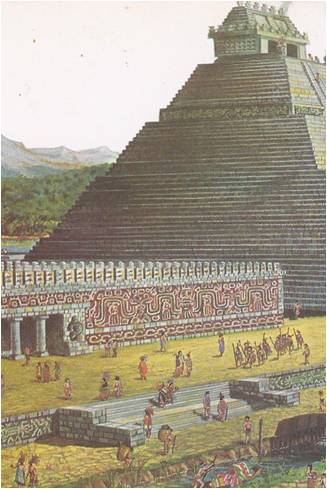IN THE spring of 1933, as the New Deal roared into action, business began to get better, but it dropped again and as 1933 ended and a new year began, even the most optimistic New Dealer had to admit that the depression was still on. During 1934, the government took further steps to regulate banking and finance‚ but some Americans were dissatisfied. Businessman complained that the government was making it harder to do business. In spite of all the excitement, the NRA was not working out well. The farmers were complaining that prices of farm products were still too low. Some farmers went on strike, refusing to take their crops to market. In the West, there was even violence as bands of farmers overturned trucks on highways to keep them from carrying farm products to the cities. Other farmers refused to let their neighbours’ farms be sold at auction. Surrounding the auctioneer, they would force him to sell the farm for a few cents and they would then give it back to its owner. Nature itself was working against the farmers. A long drought was creating a great Dust Bowl in the states of the Great Plains — in Oklahoma, the Dakotas, parts of Kansas, Nebraska and Texas. As month after month went by with no rain, the wind stirred up dust storms that darkened the sky. The helpless farmers watched their soil blow away, leaving a wasteland where once there had been fertile acres. Thousands of families were forced to give up their farms. Packing their belongings into rattling, broken-down cars, they set out for California. There they looked for work picking fruit and vegetables in the vast fields. Called “Okies”–because so many of them came from Oklahoma — they became a problem in themselves. The owners of the …
Read More »A House Divided 1833 – 1859
BEFORE ELI Whitney invented the cotton gin, Southern plantation owners were beginning to wonder if they should not give up their slaves. There was a good market for cotton; the English were buying all the cotton they could get to make into cloth in their new factories. It took too long to separate raw cotton from the seed and raising cotton simply did not pay. If the plantation owners stopped raising cotton, they would really have no need for slaves. Then after the invention of the cotton gin, raising cotton began to pay — and pay well! Cotton became the South’s big cash crop and the more cotton the plantation owners raised, the more slaves they needed. So, slavery grew in the South while it was dying out in other parts of the world. Slavery had been outlawed in the British colonies in 1833, in the French colonies fifteen years later; by this time, too, most of the Latin-American republics had liberated their slaves. The economy of the South was based on slave labour and the vast estates of the plantation owners, with their mansions, slave quarters and outbuildings, resembled the manors of feudal Europe. As a matter of fact, there was much in Southern society that resembled feudalism. The plantation owners formed a kind of aristocracy and lived the lives of country gentlemen; they owned most of the slaves and most of the land. The poorer Southerners also lived by farming, but their land holdings were small and they worked in the fields beside the one or two slaves they could afford. The South had little industry. In the North, on the other hand, while thousands of people still lived by farming, industry was growing day by day. The North needed free labour rather than slaves and Northerners began …
Read More »Adventures in the New World 1519 – 1620
“I DID NOT come to till the soil like a peasant,” said Hernando Cortez. “I came to find gold.” His words echoed the thoughts of almost every Spaniard in the New World. The discovery of the sea route to the West had set off a great treasure hunt. Colonizing and slaughtering, building and plundering, the gold-hungry Spaniards won a Spanish Empire of the West. Conquistadores‚ they were called — the conquerors. None of the treasure-hunters was more cunning or ambitious than Hernando Cortez‚ who came to the island of Hispaniola in 1504. It was not until 1519 that the governor of Hispaniola sent him on an expedition to explore the coast of Central America. Cortez sailed with five ships, 500 soldiers, eleven cannon and fifteen horses. The fleet anchored near the coast of the territory called Mexico and the men went ashore to build a settlement. Cortez ordered the ships dismantled so that none of his men could go back to Hispaniola, then set off on a march inland. Mexico was a vast country whose Indians had built a highly organized civilization and Cortez had a force of less than 500 men. He was a skillful leader; besides, he had firearms and horses –and good luck. Not long after he began his march, a horde of Indians swept out of the hills to attack the Spaniards. As soon as the Spanish cavalry appeared, the Indians fled to safety. As one soldier later wrote, the Indians, “who had never before seen a horse, thought that steed and rider were one creature.” One tribe after another surrendered. They had been conquered by the people called the Aztecs and many of them offered to join Cortez in the fight to destroy the Aztec empire. As the Spaniards and their Indian allies pushed on …
Read More »


